The message from LMAI: Time for the Indian label Industry to deliver - The Noel D'Cunha Sunday Column
Label manufacturers are in a tight spot. They need to generate profits in a business where margins are getting thinner.
24 Jul 2015 | By Noel D'Cunha

The mega trends indicate that there’s a need to use greater design elements to increase shelf appeal of labels, even as buyers are seeking limited editions, targeted campaigns and personalisation on a global scale.
Labels are becoming shorter in runs, they are needed just in time, and the focus is on reducing waste. But how does one do that? Simulate spot colours on press and standardise the press.
There’s Equinox to do that. The benefit of Equinox is in the cost and quality. There is no need for cleaning of ink stations resulting in less time in job changeover. It also makes smaller runs viable while combining different jobs on the same web.

The analogue technology was very complex and productivity too was low. In 1995, when digital came into flexo pre-press, it marked a quantum leap in the way plates were processed. The complexities were lower and productivity saw an increase.
Further developments resulted in DuPont introducing the flat top dot built into the plate technology, further refining it with surface technology.
With this technology (the digital Cyrel range of plates) we wanted the dots to come down, to almost zero. The new technology is less complex, is highly productive and is compatible with solvent as well as thermal imagers.

Elevate flexo, unlock your next generation advantage. Kodak introduced the Flexcel NX digital flexographic plates that not only improved the quality of print throughout the full tonal range but also expanded the colour gamut that could possibly be achieved.
We have focused on our industry experience to help our customers meet their goal.

Sustainable development means designing products, processes and services with environmental and societal concerns in mind. I think waste management is the key to sustainability. It is a big pivot. Reduction and reusability of waste are the best way to sustain.
Half of the material is lost even before it reaches the end user. One can save cost and become cost-effective. It’s an opportunity. It can help save around three thousands of rupees per tonne.

Sustainability must be a joint effort among manufacturers, suppliers, representatives, printers, print buyers and end users. Otherwise, it would be tough to sustain.
Sustainability is a development that meets the needs of the present without compromising the ability to produce needs of the future generations. We need to keep this definition in mind whenever and whatever we do. Ultimately waste is a cost. We have to make sustainable choices.
It must be a clear agenda of the brand owners. I recall a sentence I read on the rear windscreen of a car. It read: The best time to plant a tree was around two decades ago and the second best time is now.

It’s time label printers/converters upgraded themselves as solution providers. You have to change the way of working. There is stiff competition in the market because of availability of some jobs and the number of machines. Also, new players are coming to the market.
The traditional way of printing label has become history. Now, print buyers do not just want a printer; they want a solution provider, who can improve upon the product. As a solution provider, you will also realise that your wastages have come down and ultimately it’s a cost. So, it will be a win-win situation for you.

HP did a massive campaign with the beverage giant Coca-Cola, where millions of Coke labels were printed on HP Indigo and not a single piece was same. Print buyers can now enter into a customer’s bedroom by producing personalised condom packs.
Personlisation and value addition are the keys for print buyers, while short turnaround time and variable data printing are the keys for the printers.

We have seen clients make common mistakes that eat into their profit. Generally, gross profit is selling price minus cost price. Most of the times selling price is not in the control of the printers, but the cost price is.
This may sound obvious but by using new technologies in flexo presses, which reduces the distance between the two web units, you can arrest the costs that can run amok, and ruin profits.
Key influencing factors of cost are raw material waste, personnel cost, operating, finance and depreciation.
Label presses with short web and relevant automation can help save considerable material and save money, which ultimately adds up to profit.

If the label segment is growing at 15%, why am I not growing, is the questions that many ask. That’s because our labellers are doing more and more for less and less.
My mantra to you is: do less and less for more and more. Use less time for more production, less investment for more profit, and less effort for more value.
There are opportunities galore for the labelers. The entry-level barrier has risen considerably, growth graph continues to see upward trends, customers are realising the virtues of consistency and quality, and new markets are awaiting the arrival of innovative web converters.
Get new business while retaining existing ones, increase capacity and productivity; increase capabilities to innovate; observe, learn, educate and develop; and lastly think out-of-the-box. It’s time to graduate from being a label converter to packaging solutions provider.

Digital printing is more an art than a science.
I will reiterate that short-runs in digital reduces waste and adds to profitability. Even a long-run job is equally possible in digital. Digital is growing and so is the demand for labels. Now, you can print CMYK, white and another two colours in digital.

It’s a digital-flexo revolution time. The manufacturers have extended colour gamut and digital automation in printing and converting.
Printing inks and anilox will always be part of the printing press. Digital printing is easy for print operations. It is known for clean production and consistency in colour and quality, and finally, it is perfect for short runs.
There’s another advantage of digital. There’s no investment on plate. Thus, digital reduces turnaround time. In digital, the job switch is just a button away, and an eight-colour press can print infinite colours.

There are tricks to attain profitable sustainability. The key is the partnership between printers and suppliers, as both make each other. As long as this partnership works, it will deliver results.
We always work on no-cost or low-cost business model. According to us, profitable sustainability is a perfect marriage between social responsibility and business. It’s the stakeholders responsibility to find ways to do things in a better way. We have to opt for new ideas to reduce waste, and we have to opt for automatic solutions.

In the label industry, demand and quantity do match in terms of quality, and that's a major problem. A missing text, wrong registration, ink splash are also common in label production printing.
The solution? 100% inspection system can guarantee error-free production. The advantages of print inspection is the final check of outgoing rolls. Here, one re-winder can serve several presses. The disadvantage is that the re-winder stops after each detection of defect.
The 100% print inspection can run at high securities settings, can reduce waste significantly, and can increase confidence of the operator and the owner of print production facility. The only disadvantage is that it requires slightly higher initial investment.

The key to good labels is a plant force and training programmes; and how you maintain your plant. The modern press is hungry for more jobs, because there have been improvements overall, including plates, anilox rolls, inks and software.Gone are the day of longer changeover times, wastages, inconsistent print quality and long training curve. The set-up time has come down to 60% and waste by 50%.What has changed with flexo? Few multiple adjustments, the automatic position of print heads, easy repeatability of jobs, the pre-registration system now use servo technology and ultra short web paths. All this has helped inline monitoring, reduce labor cost, material cost and ink cost.But flexo plates still has the biggest impact on short-run costs. What can be done to reduce the plate cost? The answer is in hybrid digital solution. The hybrid presses mix digital and traditional flexo/analogue and other inline processes, utilises the platforms for web transport, tension control, and software and systems integration among other things. These production level digital solutions are designed to run high-quality jobs with speed, even producing the most demanding jobs with complete confidence.

The lowest cost per 1000 labels can be achieved with advanced technologies.
It’s a fact that there are packaging challenges and these come from increased demand for shelf impact and brand integrity, short-runs and increased versioning, reduced time to market, and raw material cost among others.
All you have to do is save 10 minutes per print job and it will result in an addition of up to 500 jobs per press over a period of one year. This can be done by using reliable, predictable and repeatable technology.
And then there’s hybrid digital technology.

Mike Buystedt of Flint
Food packaging and low-migration is a big topic at least in Europe and it is now in India too. It matters because it’s about the reputation of the product reliability and impact on the profitability of the entire supply chain manufacturers like ink, packagers and brands.
Communication within the packaging chain is essential. For example, the raw material supplier should provide details of the substances used. The ink manufacturer should give declaration whether it is suitable and intended for a specific printing process. And while the printer should maximise migration control with a list of potential migration substances, the food packer should ensure that barrier properties and migration behaviours are maintained.

Prashant Atre of Arets
A lot has been spoken about taking labels to the next level, but I think the next level for the label manufacturers will come from doing functional packaging as an extension of their current label business.
That’s because I see a lot of potential in flexo printing, with all the technological advancements it offers, as well as the preferences of the customers and the brand owners. Functional packaging will not only bring a repetition of packaging, but it will also bring enormous cost benefits as well as support sustainability.


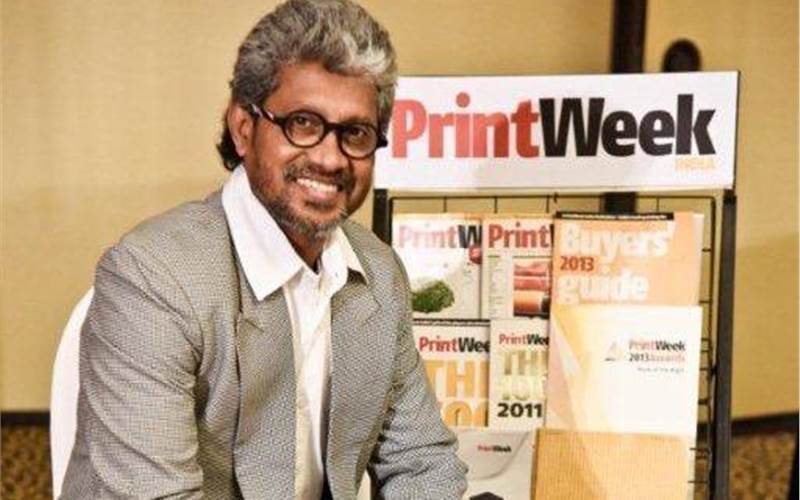





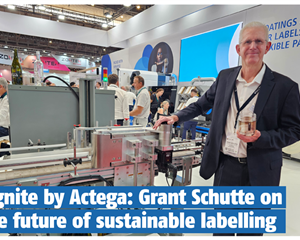
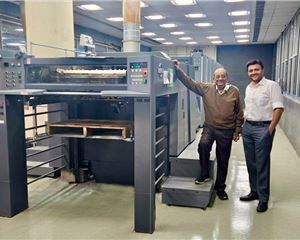
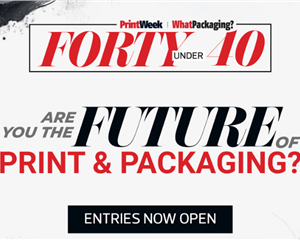
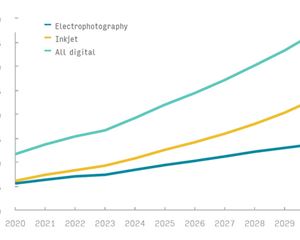
 See All
See All